
When Jane Weiner and her team walk into Browning Elementary School in Houston, the kids yell, “Hope Stone is in the house.” Weiner, founder and director of Hope Stone, Inc., jokes that the school teachers wish they received that kind of treatment. “They call it Hope Stone Day,” she says, proud of the learning environment she has built at the school through The Hope Project.
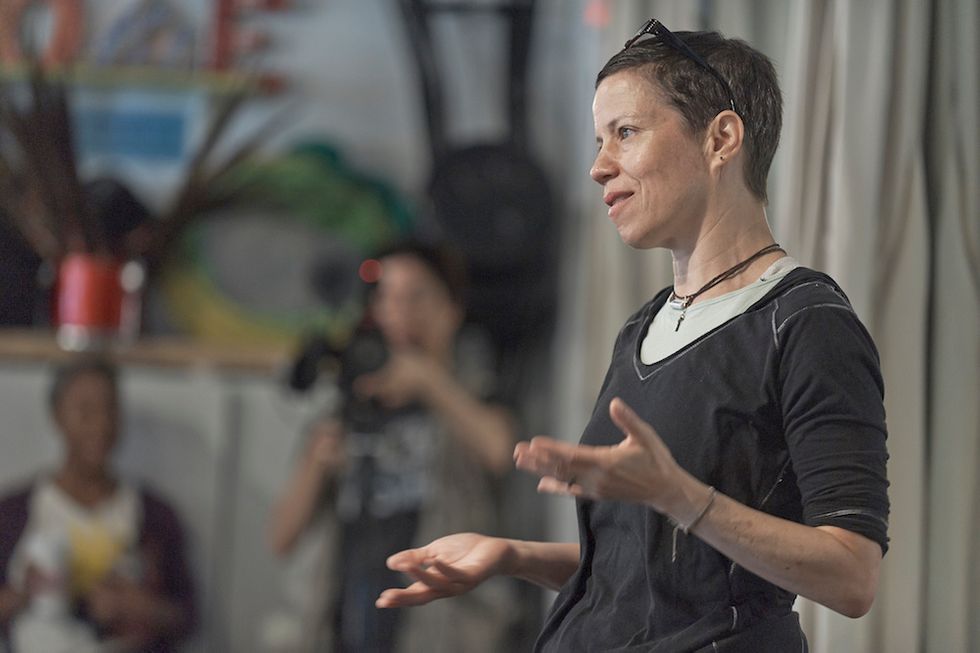
ope Stone founder and director Jane Weiner. Photo by Simon Gentry, courtesy of Hope Stone
Browning Elementary is one of 11 sites that Hope Stone teaching artists visit during any given semester, to offer dance, music, drumming, theater—or any combination. Classes are free of charge for the students; some schools contribute for her services, while others are supported by grants, foundations and individual giving. Weiner is quick to point out, “We are not an after-school program. Our classes take place during the day as part of the curriculum.”
Weiner is a Houston arts celebrity—known for her sultry dancing with Doug Elkins; for starting the Pink Ribbons Project, a cancer advocacy organization that was active from 1995 to 2016; and for running one of the busiest studios in Houston for 10 years. As a choreographer, Weiner has a knack for creating dances that have a broad appeal, a wit that operates on more than one level and a full-throttle athleticism.
When she announced the closing of Hope Stone Studio in 2014, it saddened the community and displaced as many as 400 students, including children, adults and professional dancers. But Weiner, facing the loss of her space, had to reconsider her priorities, which meant scaling back and figuring out which of her projects to keep going. Little did she know that she could continue to make an impact even without a physical space.
In January 2018, Hope Stone celebrated 20 years. The organization not only remains intact, but stronger than ever, without the burden of brick and mortar. The Hope Stone mission and reputation moved beyond the limits of a building long before the studio closed.

Hope Stone company dancers Travis Prokop and Jacquelyne Boe. Photo by Simon Gentry, courtesy of Hope Stone
After an emotional time of closing down shop, Weiner needed to rest, regroup and consider what to do with remaining grant money, which happened to be designated for The Hope Project.
Slowly, she began to grow that program. The idea was to offer classes for all kinds of people, including preschoolers, senior citizens, veterans and K–12 schoolchildren. It happened organically, nurtured by community partners and spread by a TEDx Talk Weiner gave in 2012. “I’d like to expand to LBGT and refugee communities,” says Weiner. “That’s my dream.”
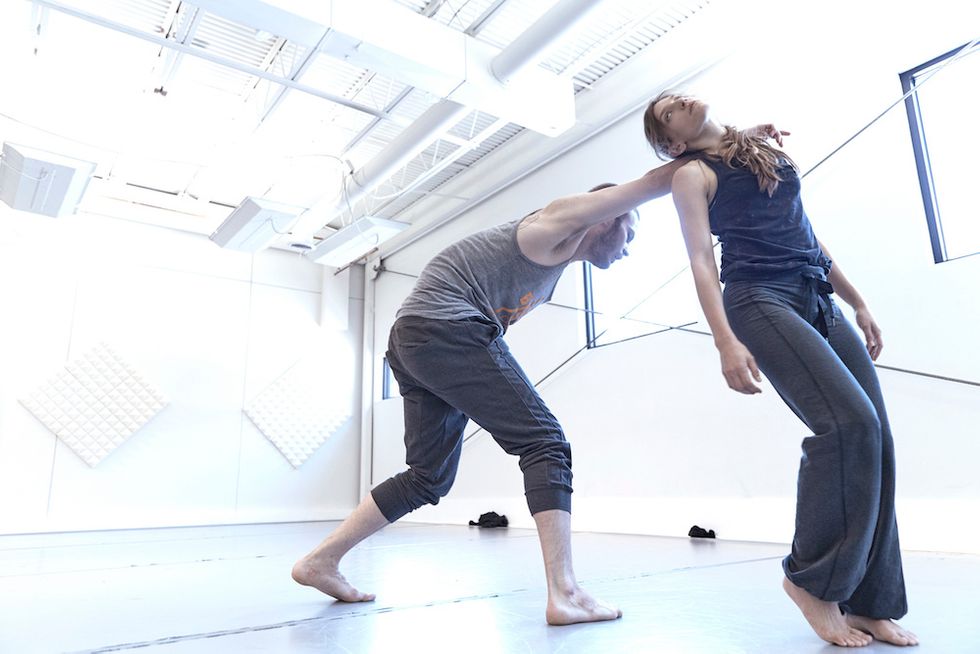
Hope Stone company dancers Travis Prokop and Jacquelyne Boe. Photo by Simon Gentry, courtesy of Hope Stone
From 2013 on, Hope Stone was selected as a featured artist for the Discovery Series at the Hobby Center, where schoolchildren come to see a dance show over a period of three days. Never being one to talk down to kids, Weiner choreographs shows that are equally interesting to adults. Each year 3,500 schoolchildren see her show. So it seemed that the city was answering her question about what was next, and she was listening.
Today, she’s pared down to a full-time staff of two, including herself, in a home office. It’s an operation she can sustain with grants. Her board of directors has stayed on through the transition. “That is a nice feeling to have them stay,” she says.
The dance company is still active as a project-based enterprise with many of the same dancers. “The new work, however, is self-produced, and so I allow more time to create, and I move away from the traditional stage for some projects. We also try to do a “pay what you can” ticket as much as possible to help expand to new audiences.”
She has grown The Hope Project teaching-artist roster to 30, which includes both teachers and assistants, and offers them classroom-management training along with help with lesson plans and building their syllabus. “Hope Stone’s teaching artists have all had professional experience—actors, dancers and musicians who are currently performing or have since retired from the stage. Their passion and energy for their artform is apparent in their classes. Our teaching artists need not put aside their careers to be in the classroom. Rather, that energy and freshness and depth of craft provide the students with a richer learning experience.”
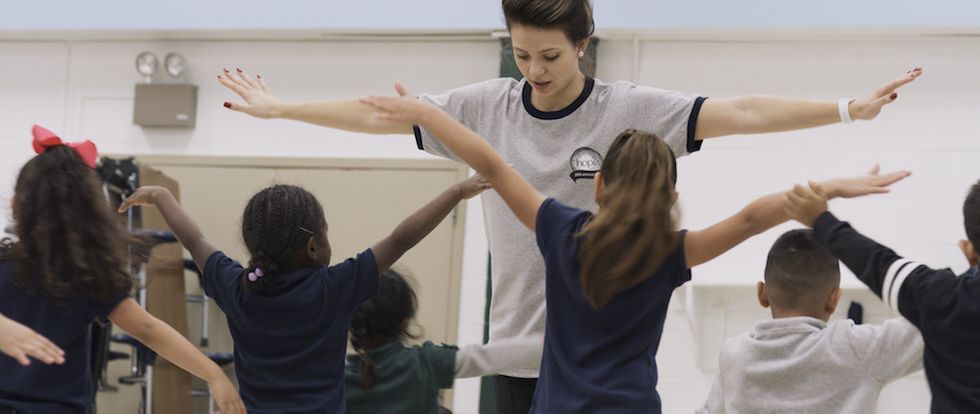
Teaching assistant Lauren Lacanlale works with first-graders of Browning Elementary School. Photo by Simon Gentry, courtesy of Hope Stone
Although Weiner considers her methodology to be a work in progress, it does have some core principles. She earned two degrees—deaf (K–12) and elementary (K–6) education—at Bowling Green State University, with a minor in dance, before moving to New York to start her professional career. “The degrees collided in a great way, allowing me to meld the two into the pedagogy I work with today,” she says, citing the study of Piaget’s Stages of Development and Maslow’s Hierarchy of Needs as major influences for movement lesson plans. Other influences include Mary Seidman at Peridance Center, where she taught for eight years, and Terrence Karn, Weiner’s colleague during the years she taught the Bates Dance Festival youth outreach classes. She gives role-model credit to “Mister Rogers’ Neighborhood,” Jacques d’Amboise and Gayle Miller, whom she started the original project with in 2004.
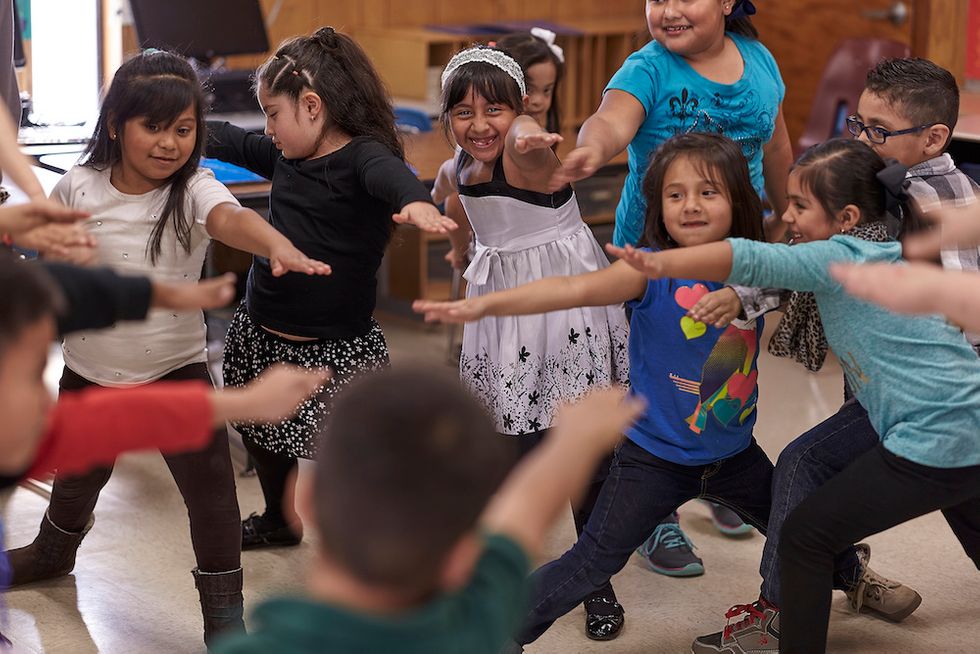
First-graders of Browning Elementary School. Photo by Simon Gentry, courtesy of Hope Stone
Weiner keeps up with ongoing brain science research that emphasizes the role of movement in learning: memory skills, following directions and building phrases are all part of the class, whether it’s for seniors or young dancers. “Problem solving and critical thinking are big for us, too, along with compassion, which is an organic part of the arts process,” adds Weiner.
Browning Elementary principal Julia Elizondo has witnessed a change in her students. “Hope Stone’s approach has brought amazing, engaging experiences that promote the necessary skills in becoming confident leaders and problem solvers,” says Elizondo. “Students are more confident when speaking, more inquisitive and eager to share what they are learning. The Hope Stone team brings in a passion for what they teach, and it is evident when watching the electric interaction between the teachers and the kids.”
A natural leader, Weiner is interested in creating dynamic relationships in the classroom. Her class combining 10th-grade students from Houston’s High School for the Performing and Visual Arts and seniors at an independent living facility is a perfect example. “At first, the teens aren’t crazy about being there, but then there’s this amazing transformation. It’s magic, there’s this respect, when all of a sudden the teens seem mature beyond their years and the seniors lose their fear. They open up. They create these wonderful duets together.” By the end of the eight-week session, the seniors and teens have become fast friends by dancing together.
No two sites are the same, and each comes with different challenges. “Sometimes, we show up and there is no space, or much interest in finding us space,” say Weiner. Those kinds of experiences tell her that site is not the best fit for her program. There is a period of trial and error to work out the kinks of every partnership. She also needs to access what works with each particular population and what is needed. At Browning, where the program is well-entrenched, Weiner has plans to offer ballet, a hip hop–modern fusion and an Indian dance class.
Weiner is well-aware that teaching in, say, a preschool, is nothing like teaching in a dedicated dance studio. She’s set up a structure where there is fluid communication among her, the teaching artists, and school faculty and administrators. “We are getting better at setting up teaching assistants, so they can work side by side,” she says. “We have found the best way to learn, aside from monthly staff training sessions, is to place the aspiring teaching artists in an assistant role for at least a year, being mentored by one of our master teachers directly in the classroom. Some teaching assistants come with lots of teaching experience, and usually within a year they can move into their own lead-teaching position. Some work as assistants for several years before they are ready to teach their own class. I have three teaching specialists—one each in dance, theater and music—and they observe all the teaching artists and assistants and give healthy feedback.”
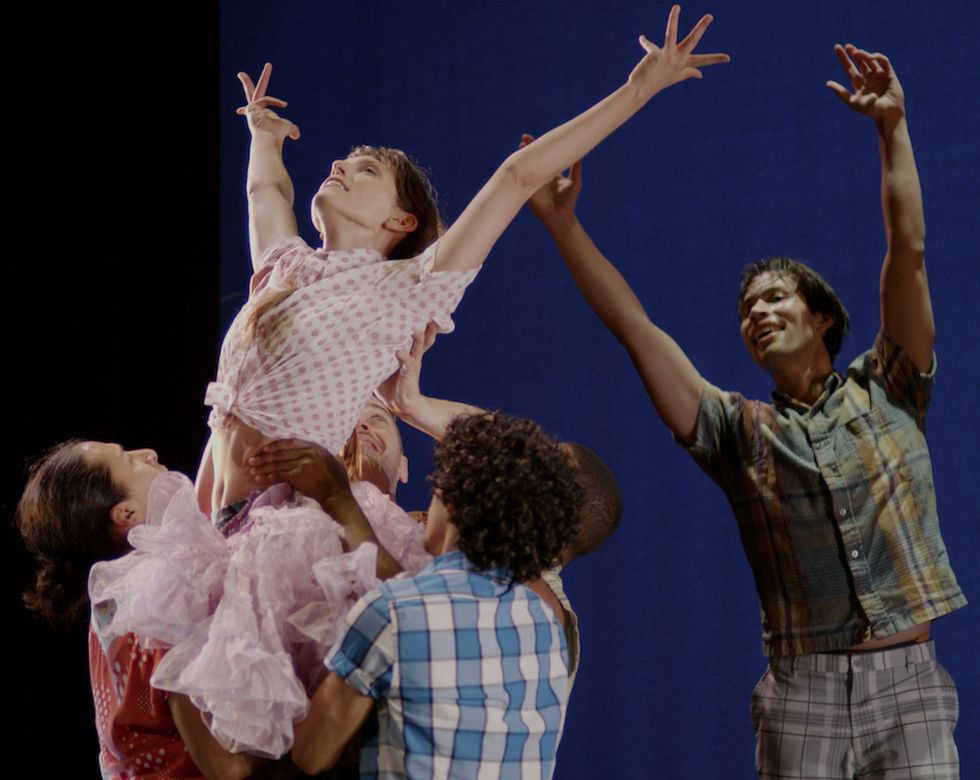
20th-anniversary show, March 2018,Hobby Center, Houston. Photo by Simon Gentry, courtesy of Hope Stone
Former Houston Ballet first soloist Kelly Myernick has been working with Weiner, first as a dancer and now as a teaching artist, for several years. “Her work allowed so much space to interpret, and the environment was just so kind and respectful,” says Myernick. “Hope Stone also offers a really unique emphasis on teacher development and dialogue. Meetings revolve around sharing ideas for language that builds trust, exercises that encourage empathy and opportunities for the children to be mindful—to just slow down and breathe. I always said that I wished the whole world operated like Hope Stone.”
Today, Weiner is in constant motion, be it teaching, scouting out performance opportunities or developing more meaningful relationships with each education site. Weiner is beginning to see the big picture, in that the work she started in the studio continues. In 17 years of outreach, she’s reached more than 1,100 students, ages 2 to 99 years.
She’s not necessarily focused on getting bigger—it’s more about assessing what works. “Next year, we are considering fewer sites—we were too scattered. I want to go deeper and wider.” She adds, with a smile, “But keep a light footprint.”




